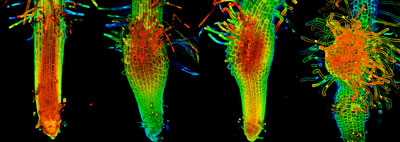 Figure 1: The formation of haustoria in Phtheirospermum japonicum seedlings grown on agar under different conditions.Credit: Republished with permission of American Society of Plant Biologists, from Cui et al. Plant Physiology 170, 1492-1503 (2016); permission conveyed through Copyright Clearance Center, Inc.
Figure 1: The formation of haustoria in Phtheirospermum japonicum seedlings grown on agar under different conditions.Credit: Republished with permission of American Society of Plant Biologists, from Cui et al. Plant Physiology 170, 1492-1503 (2016); permission conveyed through Copyright Clearance Center, Inc.
The invasive organs of parasitic plants such as witchweeds and broomrapes respond to the hormone ethylene when invading the roots of their hosts, RIKEN researchers have found1. This finding could provide researchers with new avenues for controlling these destructive plants.
Striga is a devastating parasitic weed that is particularly problematic in sub-Saharan Africa, Europe and parts of Asia. It is estimated to cause global agricultural losses that exceed US$1 billion.
Striga and other broomrapes invade plant roots using an infectious organ known as a haustorium (Fig. 1). To investigate haustorium development, a team led by researchers at the RIKEN Center for Sustainable Resource Science produced various mutants of the model broomrape Phtheirospermum japonicum and looked for plants that developed abnormal haustoria. They found two mutants in which the haustoria grew longer than usual and also began to produce transport tissues even in the absence of a host root.
The team then used whole-genome sequencing to identify the mutations. Surprisingly, both mutants had defects in genes in the same pathway-the signaling pathway of the hormone ethylene. "I couldn't believe we were that lucky," says lead author Songkui Cui, who has since moved to the Nara Institute of Science and Technology.
When the researchers treated P. japonicum plants with ethylene, they found that even a very small amount was enough to reduce the number of haustoria in normal plants, but this effect was absent in the ethylene-signaling mutants. Haustorium formation thus seems to be very sensitive to ethylene signaling, but since the mutations did not affect the number of haustoria, ethylene signaling is not needed early in haustorium development.
Turning to the later stages of haustorium growth, the team found that cell proliferation continued for longer in the apex of mutant haustoria, and this was accompanied by continued activity of another plant hormone, auxin. The mutant haustoria also proved less effective at invading roots, sometimes failing to form invasive cells and instead continuing to elongate around the host root.
Finally, the researchers tested whether haustorium development responds to ethylene from the host. Host plants with defects in ethylene biosynthesis were infected 35% less than wild-type plants, suggesting that host-derived ethylene is perceived by the parasite.
Taken together, these findings indicate that ethylene signaling guides the various stages of haustorium development. Cui believes that uncovering the basic biology of the parasite will lead to strategic ways to tackle it. "I'm continuing this work to understand the molecular mechanisms of this interaction in more detail, because many basic questions remain," says Cui. "There may be more specific processes we can eventually target."






